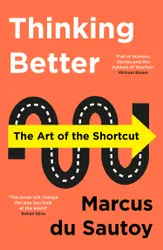This book covers a wide range of mathematical topics. Although it’s written from the perspective of avoiding slow, laborious calculations by finding shortcuts that speed things up, it’s actually more like a general survey of interesting mathematical methods and topics. The first example of a shortcut that we get is one that Carl Friedrich Gauss came up with while in school. Gauss’s teacher asked the class to add up the numbers from 1 to 100, thinking that it would take them a long time (and keep them quiet, presumably!). But Gauss figured out a shortcut that enabled him to get the right answer much more quickly, by realising that the numbers could be matched into pairs that all totalled 101 (1 + 100, 2 + 99 etc), and then multiplying by the number of pairs. Carl Friedrich Gauss is the author’s mathematical hero for his prowess in coming up with shortcuts and he appears frequently throughout the book.
Some of the mathematical shortcuts covered in the book include the use of a formula for solving quadratic equations, and spotting patterns in sequences of numbers in order to predict the next item or figure out a formula for that sequence.
While some of the shortcuts are based on arithmetic, many of them use a looser definition of shortcut. For example, using diagrams to view mathematical problems can provide a quicker way to get a correct answer, to spot a pattern that was not visible from the pure numbers themselves, or even to persuade others to take action. We learn about Florence Nightingale, who used something called a Rose Diagram to demonstrate the number of deaths caused by infectious diseases in military hospitals, in order to persuade the military to make improving sanitation a priority.
The mathematical ideas and shortcuts thoughout the book are accompanied by descriptions of their practical and scientific applications, including the use of complex numbers in describing waves and their use in radar systems. Diagrams of chemical formulae can also be considered a useful shortcut to visualising how molecules are structured, and this famously played a role in the discovery of the structure of the benzene molecule by August Kekulé.
Each chapter in the book covers a different type of mathematical shortcut, and begins with a problem for the reader to solve to illustrate that chapter’s shortcut. Later in the chapter, after some of the methods have been discussed, the solution is given. I found it fun to try solving these problems, and it was satisfying to get them right (when I did!). At the end of each chapter is an additional section which relates the mathematical principles to topics in the real world. These sections are less mathematical, covering topics like economics and recipes for making art. The book is written in a light-hearted, humorous style and includes some amusing personal anecdotes from the author. One of these is about going to visit the apple tree that Newton was supposed to have been sitting under when he came up with his theory of gravity. The author describes taking an apple from the tree and growing his own tree from the seed, so that he can sit under it and think.
One point the author makes is that sometimes coming up with a shortcut actually takes longer than solving the problem directly. But it can be very satisfying to figure out the underlying mathematical rules that make a shortcut possible. And sometimes the work to develop a shortcut helps you or others in the future to solve problems more quickly, such as in the production of tables of logarithms that made multiplication of large numbers quicker before the invention of calculators.
While most of the book is fairly easy to read and understand, I didn’t fully understand some of the more technical explanations. I think these could have been written a bit more carefully to make them a bit easier to follow. But overall I found this an enjoyable and illuminating book to read.
